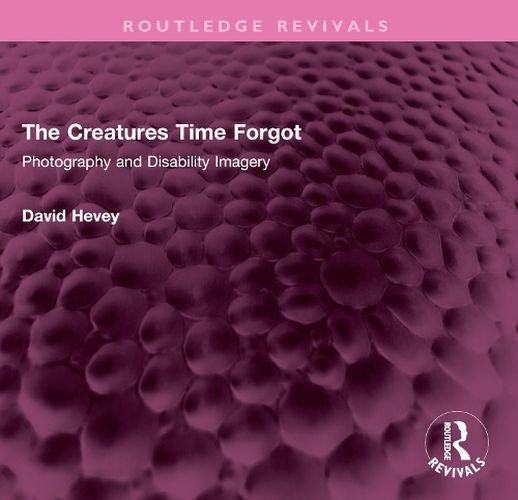Readings Newsletter
Become a Readings Member to make your shopping experience even easier.
Sign in or sign up for free!
You’re not far away from qualifying for FREE standard shipping within Australia
You’ve qualified for FREE standard shipping within Australia
The cart is loading…






First published in 1992, The Creatures Time Forgot examines the representation of disabled people - in advertising, particularly that produced by disability charities, and in the work of photographers such as Diane Arbus and Gary Winogrand. He shows how such images construct disabled people as 'creatures,' the tragic-but-brave objects of photographic gaze, or as the ''appy 'andicapped' of 'positive imagery' advertising. As a disabled photographer and writer, David Hevey has been a pioneer in challenging such visual representations of disabled people. His work advocates a move away from medical, charity or impairment-fixated imagery towards a visual equivalent of 'Rights not Charity'. The book outlines David Hevey's own photographic practice and includes wide-ranging selections from his work to create a visual form which reflects the new social presence of disabled people. This book will be of interest to students of media studies, cultural studies, and disability studies.
$9.00 standard shipping within Australia
FREE standard shipping within Australia for orders over $100.00
Express & International shipping calculated at checkout
First published in 1992, The Creatures Time Forgot examines the representation of disabled people - in advertising, particularly that produced by disability charities, and in the work of photographers such as Diane Arbus and Gary Winogrand. He shows how such images construct disabled people as 'creatures,' the tragic-but-brave objects of photographic gaze, or as the ''appy 'andicapped' of 'positive imagery' advertising. As a disabled photographer and writer, David Hevey has been a pioneer in challenging such visual representations of disabled people. His work advocates a move away from medical, charity or impairment-fixated imagery towards a visual equivalent of 'Rights not Charity'. The book outlines David Hevey's own photographic practice and includes wide-ranging selections from his work to create a visual form which reflects the new social presence of disabled people. This book will be of interest to students of media studies, cultural studies, and disability studies.